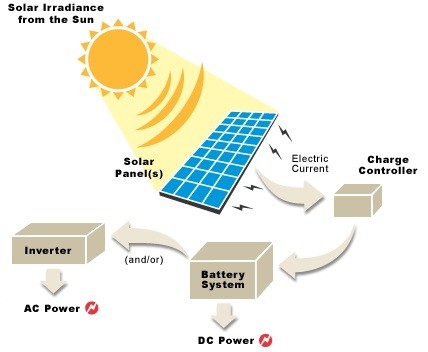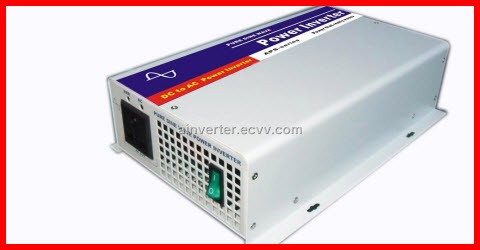The First Thing You Need To Know Is That You Need One.
The inverter is the electrical device that take the variable DC voltage from your solar cells and turns it into the AC voltage to match your house power system or the grid.
The next thing you need to know is that there are three main different types of inverters that you could use.
The three types of inverters are the Grid Tie Power Inverters, the Stand-alone Inverters and the Micro-Inverters.

Grid Tie Power Inverters
Grid Tie Power inverters, also known as Sine Wave Power Inverters, are used in the cases where you want to connect your solar panels to the electrical network (on grid installation). This has to be done in agreement with your electricity utility provider. In this case, whatever electricity your solar panels produce will be sent to your electricity provider. This is required in order to provide current stability both to your house electricity system and to the grid (they are specifically designed to precisely match the voltage and frequency of the grid).
For safety reasons, Grid Tie Power Inverters will automatically shutdown as soon as the power supply from your electricity provider is lost (anti-islanding protection).
In the cases where you have often power outages in your area you can use Battery Backup Inverters. These types of inverters can provide AC supply during power outage. They are used to charge the batteries and send any excess power to the electricity provider.
Stand-alone Inverters
These types of inverters are used in off-grid installations (isolated solar power systems). In this case batteries are an integral part of the system, so in many cases stand-alone inverters are provided in conjunction with the batteries
Micro-inverters
Micro inverters are small inverters that are installed at the back of each panel, one for each panel. The advantages of micro-inverters are the following:
- The performance of each panel can be monitored separately so that you can quickly identify problems in any panel.
- The system is easily expanded by adding another panel with its micro-inverter. In single inverter installations you need to verify that your inverter can support the expansion.
- The system has greater reliability because when a micro-inverter fails it will not affect the whole system.
- A micro-inverter is simpler in design and manufacturing and so it has longer lifetime (same as the lifetime of the panels) than single larger inverters which you are typically expected to replace them once during the lifetime of the panels.
- The panels do not need to have the same characteristics between them.
- Performance of the whole system is not affected by degradation of the performance of any single panel.
You can get more details by reading the source article.



